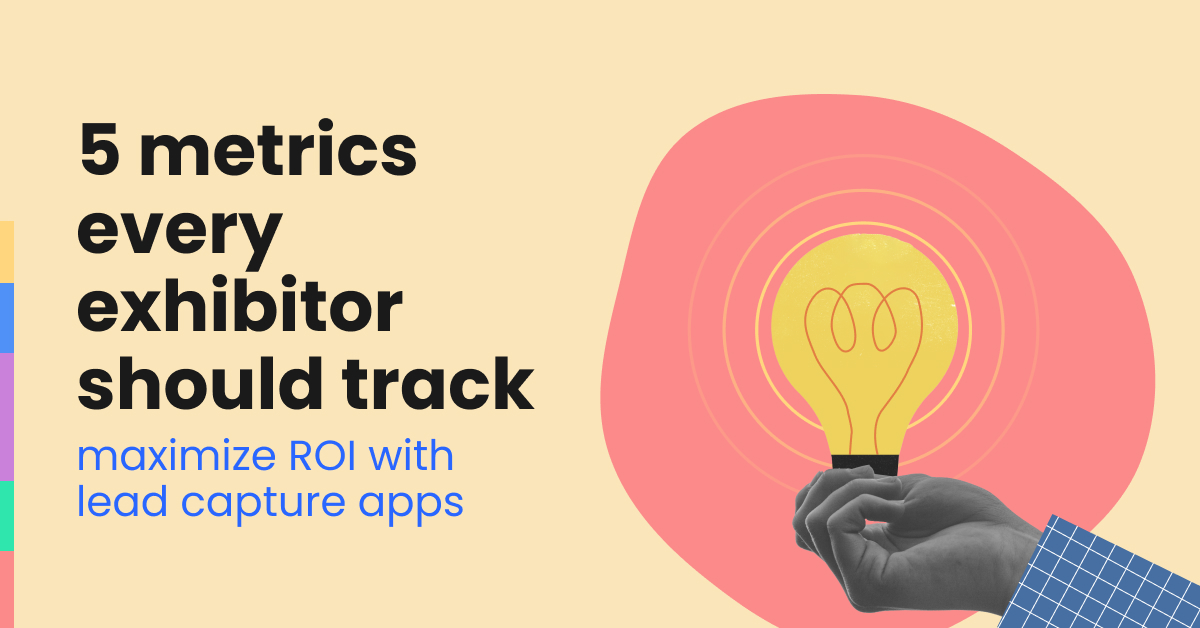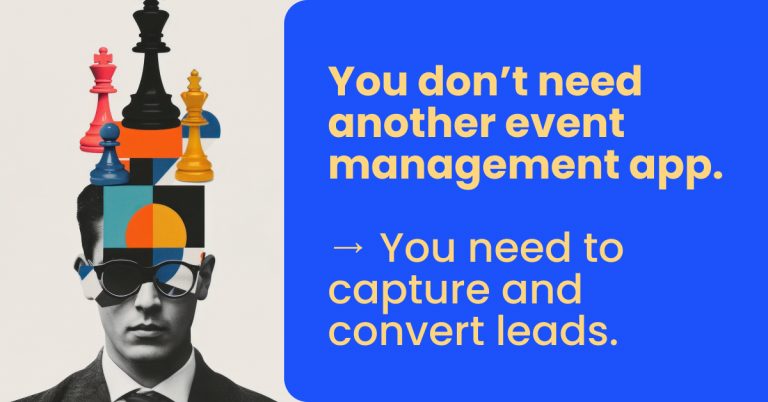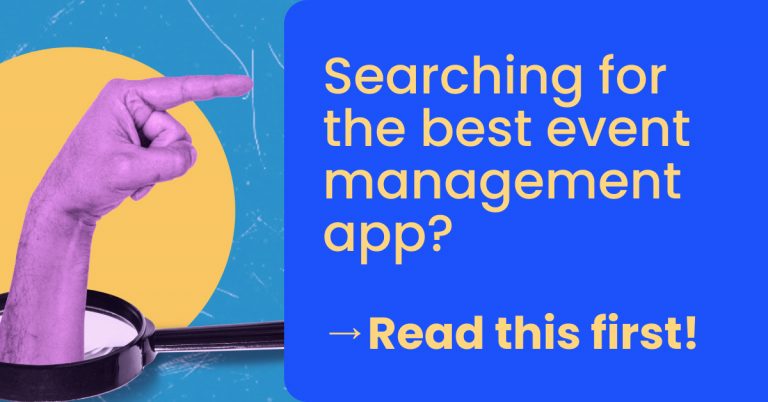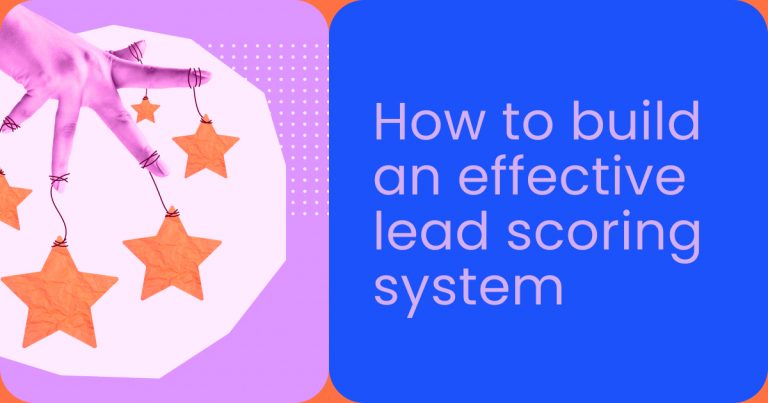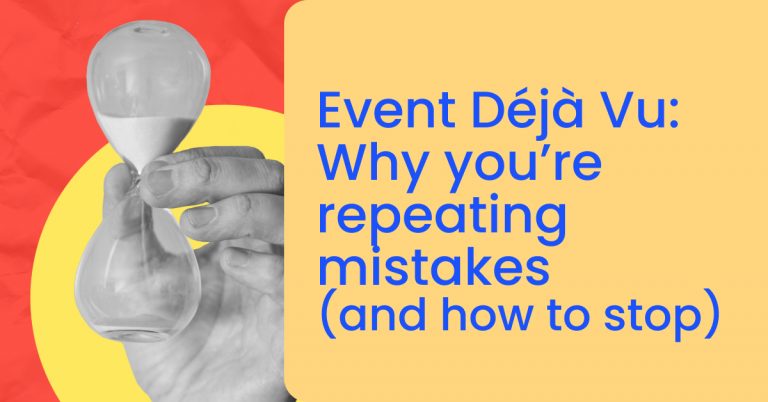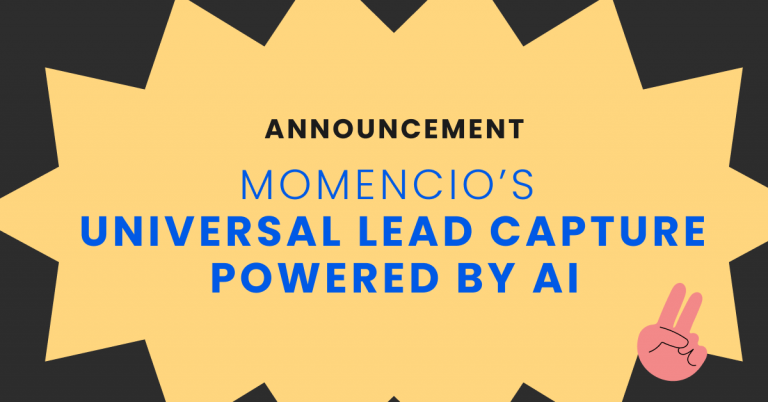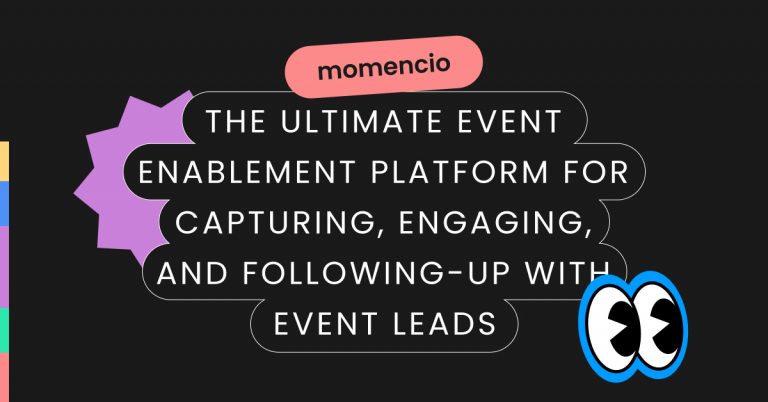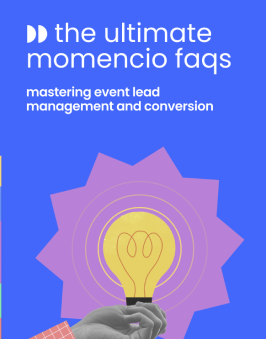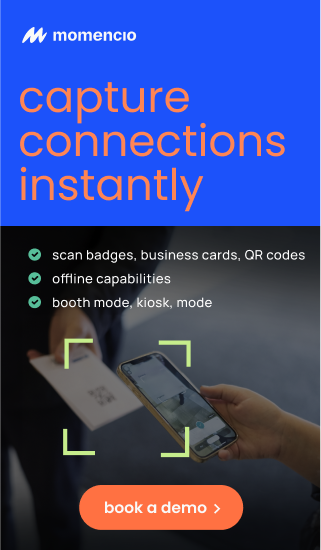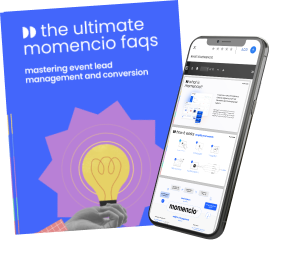For exhibitors, the success of an event hinges on more than just setting up a visually appealing booth or engaging with attendees. It’s about measuring and analyzing the right metrics to ensure your time, resources, and efforts translate into meaningful results. Yet, many exhibitors overlook critical performance indicators, relying instead on vague impressions of how well they did.
Without precise data, how do you know if your event investment paid off? How do you identify your most promising leads, assess booth engagement, or plan better for future events? That’s where the best lead capture apps come into play. These powerful tools streamline the process of collecting, analyzing, and leveraging event data, helping you make informed decisions and maximize ROI.
In this article, we’ll uncover the five must-track metrics that can make or break your event’s success. We’ll also explore how the right lead capture app can simplify tracking and transform your event strategy. Whether you’re aiming to capture qualified leads, optimize engagement, or measure ROI, this guide will equip you with actionable insights to achieve your goals.
Let’s dive into the essential questions every exhibitor should be asking and the data-driven answers that can elevate your event outcomes.
What makes event metrics vital for exhibitors?
Measuring success at events goes beyond intuition or surface-level observations. Metrics provide exhibitors with a clear, data-driven view of how their efforts are performing and what adjustments are necessary to improve outcomes. Without them, even the most well-executed booth setup can fail to deliver tangible results.
Tracking event metrics is essential for several reasons:
- Justifying investments: Events often require significant resources. Metrics help demonstrate the return on investment to stakeholders and identify areas where spending yields the most value.
- Guiding future strategies: With clear data, exhibitors can refine their approach for future events, whether it’s booth layout, attendee engagement tactics, or follow-up strategies.
- Prioritizing leads: Not all leads are equal. Metrics help pinpoint which contacts are worth pursuing based on their level of engagement and fit with your target audience.
- Improving attendee experiences: Metrics like booth traffic and attendee feedback can uncover ways to enhance engagement and satisfaction, making your events more impactful.
Unfortunately, many exhibitors either track the wrong data or fail to capture it altogether. Relying on assumptions often leads to missed opportunities and poor ROI. By adopting tools like lead capture apps, exhibitors can simplify and optimize the data collection process, ensuring no detail is overlooked.
When metrics are tracked effectively, they become a roadmap to better decisions, greater impact, and higher revenue.
5 key metrics every exhibitor must track
#1 How many leads did your team capture?
Capturing leads is one of the primary goals for exhibitors, but the volume of leads alone isn’t enough to measure success. It’s about the quality of the leads and how well they align with your target audience. Tracking the number of leads helps determine the overall reach of your event efforts, while deeper insights can reveal the most valuable prospects.
Lead capture apps play a crucial role in simplifying this process. They enable exhibitors to:
- Collect attendee information instantly through badge scanning or digital forms.
- Enrich lead profiles with data points like job titles, company size, and specific interests.
- Organize leads in real time, ensuring nothing is overlooked during the chaos of the event.
By capturing and categorizing leads on the spot, exhibitors can focus on nurturing high-priority prospects right away, setting the stage for post-event success.
#2 How engaged were your booth visitors?
Booth traffic and engagement are key indicators of how well your event presence resonates with attendees. However, tracking these metrics requires more than counting visitors—it’s about understanding their level of interaction.
Effective engagement metrics include:
- Time spent at the booth.
- Interactions with booth staff or demos.
- Participation in activities like quizzes, surveys, or product demonstrations.
With tools like badge scanners and lead retrieval apps, exhibitors can track this data seamlessly. Interactive elements such as gamification or digital displays not only enhance engagement but also provide measurable insights into attendee behavior. This data enables exhibitors to refine their booth strategies for better results at future events.
#3 Did your team follow up fast enough to convert leads?
The timeliness and quality of follow-ups can significantly impact lead conversion rates. Attendees’ interest wanes quickly after events, so exhibitors must act fast to keep the momentum alive.
Lead capture apps streamline follow-ups by:
- Automating personalized email outreach based on attendee interactions.
- Syncing leads with CRM systems to trigger follow-up workflows.
- Providing detailed notes and interaction histories to guide sales teams.
Tracking this metric ensures that no lead slips through the cracks and allows exhibitors to evaluate the efficiency of their post-event processes.
#4 What is your event ROI?
Event ROI is perhaps the most important metric for exhibitors, as it ties all other efforts to financial outcomes. Calculating ROI involves comparing the total investment in the event (booth costs, travel, marketing, etc.) with the revenue generated from leads and sales.
Lead capture software can help by:
- Tracking leads through the sales funnel to assess conversion rates.
- Integrating with analytics tools to estimate the long-term value of new customers.
- Highlighting which strategies yielded the best results, enabling exhibitors to allocate resources more effectively in the future.
By keeping ROI at the forefront, exhibitors can ensure their event investments are driving business growth.
#5 What feedback did you receive from attendees?
Feedback is a goldmine for exhibitors aiming to improve their performance and deliver a better experience at future events. Attendees provide valuable insights into what worked, what didn’t, and what they expect in the future.
Digital forms and surveys integrated into lead capture apps make gathering feedback seamless. Exhibitors can:
- Encourage visitors to share thoughts via quick surveys after booth interactions.
- Analyze feedback to uncover trends and identify areas for improvement.
- Use real-time sentiment analysis to adjust strategies during the event itself.
By prioritizing feedback, exhibitors gain a clearer understanding of attendee satisfaction and actionable insights to enhance their strategies.
How lead capture apps simplify metric tracking
Gone are the days of collecting business cards in a bowl or scribbling notes on notepads during trade shows. Lead capture apps have revolutionized the way exhibitors track and manage event metrics, offering a streamlined, tech-driven solution to overcome common challenges.
39.5% of marketers say sales would be more successful with accurate data.
Here’s how these tools simplify metric tracking and enhance event outcomes:
Real-time data capture and organization
Lead capture apps allow exhibitors to collect attendee information instantly using badge scanners, digital forms, or mobile devices. The data is automatically organized and stored in a centralized system, eliminating the risk of losing leads or making manual errors. Exhibitors can easily filter and sort leads based on criteria like interest level or industry, ensuring better prioritization.
Integration with CRM systems
One of the most powerful features of lead capture apps is their seamless integration with popular CRM tools. This connection ensures that captured data flows directly into existing sales pipelines, enabling sales teams to act quickly. Real-time syncing also ensures consistency across teams, eliminating duplicate entries or miscommunication about leads.
Automated follow-ups
The best lead capture apps go beyond data collection by enabling exhibitors to engage leads immediately. They automate personalized follow-ups, such as emails containing booth materials, product catalogs, or event highlights. These timely interactions keep the brand top-of-mind for attendees, improving the chances of conversion.
Analytics and reporting
Lead capture apps offer robust analytics tools to help exhibitors track key metrics like lead volume, engagement levels, and follow-up efficiency. These insights are critical for evaluating event performance and optimizing future strategies. With access to visual dashboards and detailed reports, exhibitors can make data-driven decisions with confidence.
Enhanced attendee experiences
Beyond internal benefits, lead capture apps improve the attendee experience. By digitizing the process, they allow visitors to interact with exhibitors through streamlined, professional workflows. Whether it’s filling out a digital survey or scanning a badge, the experience feels modern and efficient, leaving a positive impression of the brand.
Why it matters
The real value of lead capture apps lies in their ability to save time, reduce complexity, and improve outcomes. They provide exhibitors with a centralized system for managing event metrics, ensuring nothing gets overlooked. By investing in the right app, exhibitors can enhance their efficiency, focus on high-value prospects, and maximize ROI.
Key features to look for in the best lead capture app
Choosing the right lead capture app can significantly impact your event performance and results. With many options available, it’s essential to identify the features that align with your goals and make lead management seamless. Here are the must-have features to consider:
Badge scanning and digital lead capture
The ability to scan badges or capture leads digitally is a cornerstone feature. This eliminates manual data entry, ensuring attendee information is collected quickly and accurately. Look for apps that support multiple scanning methods, including QR codes, NFC, and barcode scanning, to accommodate various event formats.
Real-time lead scoring
Not all leads are created equal, so real-time lead scoring is crucial. This feature allows you to prioritize leads based on predefined criteria such as job title, industry, or engagement level. It ensures that your sales team focuses on the most promising opportunities first.
CRM and marketing tool integrations
Seamless integration with your CRM system and marketing automation tools is non-negotiable. It ensures captured data flows directly into your existing workflows, enabling immediate follow-up and reducing the risk of lost leads. Integration also helps align sales and marketing efforts, enhancing overall efficiency.
Customizable lead capture forms
A great lead capture app should allow you to tailor forms to collect the specific data you need. Whether it’s additional contact details, areas of interest, or purchasing timelines, customization ensures you gather actionable insights that support your sales strategy.
Automation for follow-ups
Automation features are essential for engaging leads promptly. Look for apps that enable you to set up workflows for sending follow-up emails, event materials, or personalized content immediately after the interaction. This keeps your brand top-of-mind and increases conversion potential.
Robust analytics and reporting tools
A good lead capture app doesn’t just collect data—it helps you understand it. Analytics features provide insights into metrics like lead volume, booth traffic, and post-event engagement. Visual dashboards and reports allow you to evaluate performance and refine your strategy for future events.
Offline functionality
Unreliable event Wi-Fi shouldn’t hinder your lead capture efforts. Apps with offline functionality let you collect data without an internet connection, syncing it later when you’re back online. This ensures you never miss a lead, regardless of connectivity issues.
User-friendly interface
An intuitive interface is vital for ensuring your team can use the app effectively without extensive training. A clutter-free design and straightforward workflows save time and prevent errors, especially during busy events.
Security and compliance
Protecting attendee data is critical. Choose an app that prioritizes data security with encryption and complies with regulations like GDPR to ensure attendee information is handled responsibly.
Multi-event management capabilities
If you participate in multiple events annually, select an app that can manage data across events. This allows you to track and compare performance, helping you identify trends and optimize future participation.
How to evaluate your options
When comparing lead capture apps, prioritize those that offer a free trial or demo. This gives you a hands-on experience with the app’s features and usability. Additionally, consider reading user reviews and consulting industry peers for recommendations.
Finding the right lead capture app is more than a technical choice—it’s a strategic decision that can elevate your event outcomes.
Conclusion
Tracking the right metrics at events is the difference between guessing your performance and making data-driven decisions that drive measurable success. By focusing on key indicators like lead volume, engagement levels, follow-up efficiency, ROI, and attendee feedback, exhibitors can refine their strategies, boost conversions, and maximize their event ROI.
However, effectively tracking these metrics can be challenging without the right tools. That’s where lead capture apps prove invaluable. These apps not only simplify data collection but also automate key processes like lead scoring, follow-ups, and analytics. They provide exhibitors with actionable insights and a seamless workflow, enabling them to focus on what truly matters—building relationships and driving business growth.
Adopting a lead capture app isn’t just about convenience; it’s a strategic move to stay competitive in a data-driven event landscape. With features like badge scanning, CRM integration, and real-time analytics, these tools empower exhibitors to turn every event into a growth opportunity.
By implementing the strategies and tools discussed in this article, you can transform how you approach events and ensure every effort translates into meaningful results.
Ready to make your event metrics work for you? Book a demo with momencio today and discover how its innovative lead capture tools can simplify tracking, improve follow-ups, and help you achieve your event goals.
FAQs
- What are the most critical metrics exhibitors should track at events?
- Exhibitors should prioritize tracking lead volume, engagement levels, follow-up efficiency, ROI, and attendee feedback. These metrics provide a comprehensive view of performance and highlight areas for improvement to maximize future event success.
- How can lead capture apps help in tracking these metrics?
- Lead capture apps streamline the process by automating data collection, scoring leads in real-time, and integrating seamlessly with CRM tools. They provide exhibitors with instant insights into key metrics, enabling more effective post-event follow-ups and strategy refinements.
- Are lead capture apps worth the investment for small businesses?
- Yes, lead capture apps are highly scalable and provide significant ROI by saving time, improving data accuracy, and enhancing lead management. For small businesses, they simplify processes and allow teams to focus on high-value prospects.
- How quickly should I follow up with leads after an event?
- Following up within 24-48 hours is ideal, as it keeps your brand fresh in attendees’ minds and increases the likelihood of conversions. Lead capture apps can automate this process, ensuring timely and personalized communications.
- What features should I look for in a lead capture app?
- Key features include badge scanning, real-time analytics, CRM integration, lead scoring, customizable forms, automation for follow-ups, and robust reporting tools. These features ensure the app aligns with your event goals and simplifies lead management.
Interesting insights and pro tips
- Mistake to avoid: Many exhibitors focus solely on the number of leads captured, ignoring engagement and follow-up metrics. Balance quantity with quality to prioritize actionable insights.
- Optimization tip: Use real-time analytics to adjust your strategies during the event. If certain booth activities aren’t drawing attention, shift efforts toward higher-impact engagements.
- Pro tip: Invest in a lead capture app with offline functionality to avoid interruptions caused by poor event Wi-Fi. This ensures seamless data collection regardless of connectivity issues.
